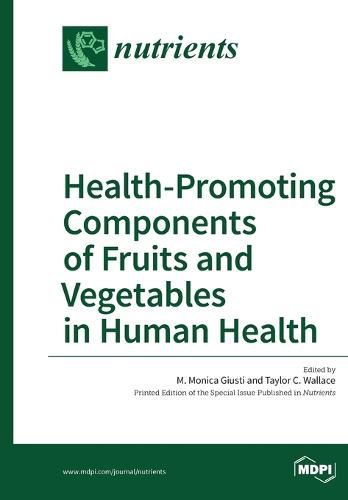Readings Newsletter
Become a Readings Member to make your shopping experience even easier.
Sign in or sign up for free!
You’re not far away from qualifying for FREE standard shipping within Australia
You’ve qualified for FREE standard shipping within Australia
The cart is loading…






This title is printed to order. This book may have been self-published. If so, we cannot guarantee the quality of the content. In the main most books will have gone through the editing process however some may not. We therefore suggest that you be aware of this before ordering this book. If in doubt check either the author or publisher’s details as we are unable to accept any returns unless they are faulty. Please contact us if you have any questions.
Diet and lifestyle choices can substantially predispose an individual to, or protect against, many age- and obesity-related chronic diseases. According to the NIH Office of Dietary Supplements, dietary bioactives arecompounds in foodsnot needed for basic human nutrition but responsible for changes in health status.1 These compounds are safe at normal food consumption levels (e.g., anthocyanins in berries) and their biological activities may come from a single compound (e.g., lutein in spinach) or a class of compounds (e.g., avenanthramides in oats) even if the exact identity and composition are unknown. Bioactive compounds of plants; can vary significantly in their ratios and relative concentrations depending onfactors such as cultivation, soil, altitude, and weather conditions. Substantial scientific evidence is available for some health promoting phytochemicals, such as dose-response relations, for performance and/or reduction in the risk of chronic disease. However, several limitations relating to absorption, distribution, metabolism and excretion of many dietary bioactives still exist and must be better understood This Special Issue compiles recent discoveries that advance our understanding of how dietary bioactive, particularly from fruits and vegetables, influence long-term health maintenance and disease prevention.
$9.00 standard shipping within Australia
FREE standard shipping within Australia for orders over $100.00
Express & International shipping calculated at checkout
This title is printed to order. This book may have been self-published. If so, we cannot guarantee the quality of the content. In the main most books will have gone through the editing process however some may not. We therefore suggest that you be aware of this before ordering this book. If in doubt check either the author or publisher’s details as we are unable to accept any returns unless they are faulty. Please contact us if you have any questions.
Diet and lifestyle choices can substantially predispose an individual to, or protect against, many age- and obesity-related chronic diseases. According to the NIH Office of Dietary Supplements, dietary bioactives arecompounds in foodsnot needed for basic human nutrition but responsible for changes in health status.1 These compounds are safe at normal food consumption levels (e.g., anthocyanins in berries) and their biological activities may come from a single compound (e.g., lutein in spinach) or a class of compounds (e.g., avenanthramides in oats) even if the exact identity and composition are unknown. Bioactive compounds of plants; can vary significantly in their ratios and relative concentrations depending onfactors such as cultivation, soil, altitude, and weather conditions. Substantial scientific evidence is available for some health promoting phytochemicals, such as dose-response relations, for performance and/or reduction in the risk of chronic disease. However, several limitations relating to absorption, distribution, metabolism and excretion of many dietary bioactives still exist and must be better understood This Special Issue compiles recent discoveries that advance our understanding of how dietary bioactive, particularly from fruits and vegetables, influence long-term health maintenance and disease prevention.